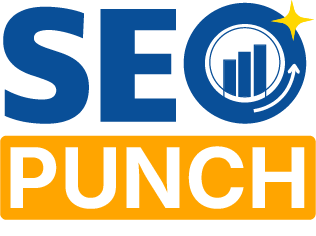Google is continually upgrading its algorithms to provide visitors with the greatest possible search experience and stay competitive with the digital world’s advancements. Bloggers SEO tips are vital for bloggers to keep updated on market trends. Many individuals believe that search engine optimization is as simple as putting keywords in your article. SEO, or Search Engine Optimization, is a term that refers to practices that assist search engines in locating your website.
Stay Ahead with Latest SEO Trends
As we enter a new time, SEO continues to evolve with AI-driven search, voice search optimization, and Google’s rearmost algorithm updates. Search engines now prioritize E-E-A-T( Experience, Expertise, Authoritativeness, and Trustworthiness) more than ever, making high-quality, user-first content essential for rankings. AI-powered tools help bloggers upgrade keyword strategies and optimize for conversational, voice-based searches as further users rely on smart assistants. Also, Google’s Hunt Generative Experience( SGE) integrates AI-driven responses, meaning structured data, FAQs, and interactive content are crucial for visibility. Keeping up with these trends will help bloggers maintain and improve their SEO rankings
Various factors, especially contents, keywords, and HTML source code, can significantly boost your site’s rating and traffic.
1. Selecting the Appropriate Keyword –
Keywords are the search queries put into a search engine. To do this, a balance must be maintained between choosing a unique term and then something that is commonly used. Think a bit about ‘what would your search results appropriate response?’ and this will assist you to get a better SEO as a blogger.
There are various free keyword planner tools available online to assist you in making a more informed choice. You should probably be conscious and strive to avoid it by not adding terms excessively, as keyword stuffing might cause a negative impact on your site’s rating.
An effective technique for keyword density planning:
- Make natural use of keywords.
- Avoid manipulating repeated keywords.
- Including important phrases and synonyms that are relevant.

2. Title Tag Optimization –
Title tags notify search engines more about the subject of your page. The title tag is essential since it is closely tied to search engine results. Your title must be descriptive, concise, and contain relevant keywords. Optimizing your title tag assists search engines in understanding the content of your page, and alongside the meta description, it serves as your site’s initial impression.
Additionally, the title appears as a placeholder at the top of your web browser window and in your browser history. Important keywords must appear at the beginning of your title for SEO purposes, and any related to SEO enhance the user experience.
An enticing headline encourages readers to click through to the search results. It is advised that your title contain no more than 60 characters. If your title tag is too lengthy, it will be unable to be appropriately displayed.
The best approach for writing title tags is as follows:
- Create an attractive title tag to entice potential clients and visitors to click.
- Create a descriptive title that informs users about the content of your page.
- Approximately 40-60 characters with spaces
- Consider visibility – significant keywords should be represented.
- Do not begin with the name of your company.
- Title tags must be unique and distinct from other pages.
- Avoid using an uppercase title.
- All words should begin with a capital letter.
3. Create An Efficient URL Structure –
All bloggers should consider optimizing their URL structure because it is easy yet critical for SEO. Googlebot and users both look at the URL structure to determine the content of your webpage. Make your URL as short and straightforward as possible; if your URL is too long or complicated, modify and customize the standard permalink. A well-optimized permalink is readable by both humans and crawlers.
Several tips for creating a more effective URL structure –
- A shorter URL structure is ideal, and SEO freelancing experts suggest that URL structures be kept short between 40 and 100 characters.
- Include keywords in the URLs of your websites.
- Instead of spaces or underscores, use hyphens to separate words in URLs.
- Users and crawlers should be able to read and search through it.
- Eliminate irrelevant components or unnecessary words.
- Maintain the use of lowercase letters.
4. Utilize concise paragraphs and headings –
Naturally, readers have short attention, so shorter paragraphs perform better. However, by inserting relevant headings to your paragraphs, the search engine appreciates them more.
Consider using headers (H2) and subheadings (H3) in your content, if applicable, to help organize it. Include the term into your H2 tags (the headings) if possible without making it too obvious.
5. Meta Description Tag Optimization –
The meta-description is essential because your page contents are likely to be summarized and directly impacted in SERPs by CTR. The Meta description continues to play a vital part in SEO, even if it is no longer as critical for ranking as it was before. Together with the headline, they persuade the audience that your page covers detailed information they need.
You can examine the Meta description for any blog site by right-clicking on it and choosing “view source,” when searching for “meta.” Google does not recommend a set length, although as is common, it will be shortened if it is too long. It is recommended that your description tag be approximately 160 characters long.
The following are the rules and standards for writing a description tag:
- Create an enticing description tag.
- Make it brief.
- In the description tag, include a keyword.
- Provide easy scanning access because individuals don’t read the results; they scan them.
- Provide them with a straightforward message
- Create distinct descriptions for each page.
For More Bloggers SEO tips follow us on Instagram – instagram.com/theseopunch
Contact Now for a free audit of your Blogs.





